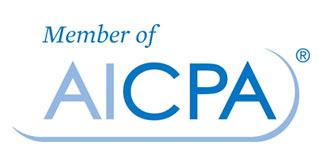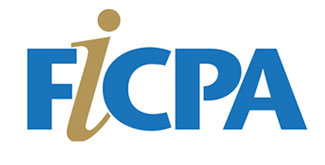On August 16, President Biden signed the 2022 Inflation Reduction Act (IRA), a significantly scaled-back version of the Build Back Better Act. Two of the most favorable changes contained in the 2022 IRA that are beneficial for individuals are (1) a three-year extension of expanded Affordable Care Act health insurance subsidies, which were set to expire at the end of 2022, and (2) a myriad of clean energy incentives, including expanded and modified residential clean energy tax credits and clean vehicle tax credits. There is however, one tax benefit that self-employed individuals received for 2020 and 2021 that will be expiring at the end of 2021 and that is the 100 percent expense deduction for food and beverages. The deduction limitation will go back to 50 percent beginning January 1, 2023.
The following are some year-end considerations to review with clients, as well as some actions that may help reduce a client’s 2022 tax bill.
Individual Tax Brackets Increased for 2022
For 2022, the top tax rate of 37 percent applies to incomes over $539,900 (single and head of household), $647,850 (married filing jointly and surviving spouse), and $323,925 (married filing separately). For 2023, inflation has pushed those brackets to $578,125 (unmarried other than surviving spouses and heads of households), $693,750 (married individuals filing jointly and surviving spouses), $578,100 (heads of households), and $346,875 (married filing separately). However, high-income taxpayers are also subject to the 3.8 percent net investment income tax on the lesser of net investment income or the excess of modified adjusted gross income over the following threshold amounts: $250,000 for married filing jointly or qualifying widow(er), $125,000 for married filing separately, and $200,000 in all other cases. These amounts are not adjusted for inflation. High-income taxpayers are also subject to the .9 percent additional Medicare tax on certain income that is more than a threshold amount. The types of income subject to this tax include Medicare wages, self-employment income, and railroad retirement compensation. For taxpayers subject to one or both of these additional taxes, there are certain actions (discussed below) that can be taken to mitigate the damage of these additional taxes. It’s worth noting that these taxes are not deductible.
For married couples, employers do not take a spouse’s self-employment income or wages into account when calculating the .9 percent additional Medicare tax withholding for an employee. If a married couple’s income will exceed the $250,000 threshold in 2022, and they have not made enough tax payments to cover the additional .9 percent tax, a Form W-4 should be filed with the taxpayer’s employer before year end to have an additional amount deducted from the client’s wages. Otherwise, the couple may get hit with underpayment of tax penalties.
Standard Deduction versus Itemized Deductions
It’s important to determine whether it makes sense for a client to itemize deductions as there are steps that can be taken which will give a taxpayer enough deductions to itemize. For 2022, the standard deduction amounts are: $12,950 (single); $19,400 (head of household); $25,900 (married filing jointly and surviving spouse); and $12,950 (married filing separately). The additional standard deduction amount for taxpayers who are 65 or older or blind is $1,400. This additional amount is increased to $1,750 if the individual is also unmarried and not a surviving spouse.
If a client’s itemized deductions in 2022 will be close to his or her standard deduction amount, consideration should be given to paying certain deductible amounts (such as medical and charitable expenses) in 2022 rather than 2023 to the extent possible, or vice versa. In essence, determine whether bunching deductions in one year and taking the standard deduction in alternate years can provide a net-tax benefit over the two-year period.
Retirement Plan Contributions
Clients can save a lot on taxes by making the maximum contributions to a qualified retirement plan. Individuals under 50 years old who work for an employer that has a 401(k) plan can defer up to $20,500 of income into that plan for 2022. Catch-up contributions of $6,500 are allowed for individuals who are 50 or over. For a SIMPLE 401(k), the maximum pre-tax contribution for 2022 is $14,000. That amount increases to $17,000 for individuals 50 or older. The maximum IRA deductible contribution for 2022 is $6,000 and that amount increases to $7,000 for individuals 50 or over.
Charitable Contributions
With respect to charitable donations, clients may reap a larger tax benefit by donating appreciated assets, such as stock, to a charity. Generally, the higher the appreciated value of an asset, the bigger the potential value of the tax benefit. Donating appreciated assets not only entitles the taxpayer to a charitable contribution deduction but also avoids the capital gains tax that would otherwise be due if the taxpayer sold the stock.
For example, if a client owns stock with a fair market value of $1,000 that was purchased for $250 and the client’s capital gains tax rate is 15 percent, the capital gains tax on the sale would be $113 ($750 gain x 15%). By donating that stock instead of selling it, a client in the 24 percent tax bracket has an ordinary income deduction worth $240 ($1,000 FMV x 24% tax rate). So, the client saves the $113 in capital gains tax that would otherwise be generated on the sale of the stock and that amount goes to the charity instead. Thus, the after-tax cost of the gift of appreciated stock is $647 ($1,000 – $240 – $113) compared to the after-tax cost of a $1,000 cash donation which would be $760 ($1,000 – $240). However, it’s important to also keep in mind that tax deductions for contributions of appreciated long-term capital gain property may be limited to a certain percentage of adjusted gross income depending on the amount of the contribution and the type of property contributed.
Additionally, because taxpayers 70 1/2 years old and older who own an individual retirement account (IRA) must take minimum distributions from that account each year and include those amounts in taxable income, a special provision allows such taxpayers to make a charitable contribution directly from their IRAs to a charity. This has several benefits. First, since charitable contributions deductions are usually only available to individuals who itemize, a taxpayer who takes the standard deduction can benefit from this rule. Second, by making a contribution directly to a charity, the donation counts towards the taxpayer’s required minimum distribution, but that amount is not included in income and thus reduces taxable income and adjusted gross income (AGI). A lower AGI is advantageous because it increases the taxpayer’s ability to take medical expense deductions that might not otherwise be available. In addition, the reduction in AGI decreases the amount of the taxpayer’s social security income subject to income tax and possibly the 3.8 percent net investment income tax if the taxpayer has a lot of investment income.
Premium Tax Credit
Code Sec. 36B provides a health insurance subsidy through a premium assistance credit for eligible individuals and families who purchase health insurance through the Health Insurance Marketplace, also known as the “Exchange.” The provision is the result of the Patient Protection and Affordable Care Act (PPACA). The premium assistance credit is refundable and payable in advance directly to the insurer on the Exchange. In the past, individuals with incomes exceeding 400 percent of the poverty level were not eligible for these subsidies. However, as a result of the American Rescue Plan (ARP) Act, the cap was eliminated for tax years beginning in 2021 or 2022 and therefore, anyone can qualify for the subsidy. In addition, the percentage of a person’s income paid for a health insurance under a PPACA plan is limited to 8.5 percent of income. Thus, individuals who buy their own health insurance directly through the Exchange are eligible to receive increased tax credits to reduce their premiums.
These increased subsidies were set to expire at the end of this year but were extended through 2025 by the Inflation Reduction Act of 2022.
Qualified Business Income Deduction
Under the qualified business income tax break in Code Sec. 199A, a 20 percent deduction is allowed against qualified business income from sole proprietorships, S corporations, partnerships, and LLCs taxed as partnerships. The deduction is available to both itemizers and non-itemizers. The rules that apply to individuals with taxable income at or below $170,050 ($340,100 for joint filers; $170,050 for married individuals filing separately) are simpler and more permissive than the ones that apply above those thresholds. The deduction phases out entirely when taxable income exceeds $220,050 (single, head of household, and married filing separately) and $440,100 (joint filers). However, this deduction does not apply to a “specified service trade or business,” which is defined as any trade or business involving the performance of services in the fields of health, law, accounting, actuarial science, performing arts, consulting, athletics, financial services, brokerage services, including investing and investment management, trading, or dealing in securities, partnership interests, or commodities, and any trade or business where the principal asset of such trade or business is the reputation or skill of one or more of its employees. Engineering and architecture services are specifically excluded from the definition of a specified service trade or business.
Deductions for Excess Business Losses
Under Code Sec. 461(l), excess business losses of a noncorporate taxpayer are disallowed for tax years beginning after December 31, 2020, and before January 1, 2029. An excess business loss for the tax year is the excess of aggregate deductions attributable to a client’s trades or businesses over the sum of aggregate gross income or gain plus a threshold amount. The threshold amount for 2022 is $270,000 or $540,000 for joint returns. Excess business losses that are disallowed are treated as a net operating loss carryover to the following tax year.
Nonbusiness energy property credit.
For years before 2023, the nonbusiness energy property credit under Code Sec. 25C (renamed the energy efficient home improvement credit by the 2022 IRA) is a credit for: (1) 10 percent of the cost of qualified energy efficiency improvements installed during the year; and (2) the amount of the residential energy property expenditures paid or incurred by the taxpayer during the year.
Qualified energy efficiency improvements include the following qualifying products: (1) energy-efficient exterior windows, doors and skylights; (2) roofs (metal and asphalt) and roof products; and (3) insulation. Residential energy property expenditures generally include: (1) energy-efficient heating and air conditioning systems, and (2) water heaters (natural gas, propane, or oil). There is a lifetime limit of $500 on the total amount of nonbusiness energy property credits that may be claimed. In addition, the amount of the credit taken with respect to windows cannot exceed $200. The following additional limitations also apply to the nonbusiness energy property credit: (1) $300 for any item of energy-efficient building property; (2) $150 for any furnace or hot water boiler; and (3) $50 for any advanced main air circulating fan.
This credit expired at the end of 2021 but was extended through 2032 by the 2022 IRA. The 2022 IRA also modified and expanded the nonbusiness energy property credit for property placed in service after December 31, 2022. Beginning in 2023, the credit is increased to 30 percent of the costs of all qualified energy efficiency improvements and residential energy property expenditures made during the year. In addition, the lifetime credit limitation is replaced with an annual limit of $1,200. The annual limits for specific types of qualifying improvements will be (1) $250 for any exterior door ($500 total for all exterior doors), (2) $600 for exterior windows and skylights, (3) $600 for other qualified energy property (including central air conditioners; electric panels and certain related equipment; natural gas, propane, or oil water heaters; oil furnaces; water boilers), and (4) a higher $2,000 annual limit for heat pumps and heat pump water heaters, biomass stoves, and boilers. The 2022 IRA also added a credit of up to $150 per year for home energy audits. Roofs no longer qualify for the Code Sec. 25C credit beginning in 2023.
Residential energy efficient property credit.
The residential energy efficient property credit under Code Sec. 25D (renamed the residential clean energy credit by the 2022 IRA) equals 30 percent of the cost of certain qualified property installed on or used in connection with the taxpayer’s home. Before January 1, 2023, qualifying properties are: (1) solar electric property, (2) solar water heaters, (3) fuel cell property, (4) small wind turbines, (5) geothermal heat pumps, and (6) biomass fuel property. Under the 2022 IRA, biomass fuel property expenditures no long qualify after December 31, 2022. However, battery storage technology expenditures qualify beginning in 2023.
Qualified plug-in electric drive motor vehicle credit.
Under Code Sec. 30D, a taxpayer who acquires a qualified plug-in electric drive motor vehicle is generally allowed a credit for the tax year the vehicle is placed in service. For 2022, the amount of the credit is $2,500, plus an amount based on the battery capacity of the vehicle if the vehicle draws propulsion energy from a battery with at least 5 kilowatt hours of capacity. The amount based on battery capacity is equal to $417 plus $417 for each kilowatt hour of capacity in excess of five kilowatt hours. However, the total amount based on battery capacity cannot exceed $5,000. The credit begins to phase out for a manufacturer’s vehicles when at least 200,000 qualifying vehicles have been sold for use in the United States. For instance, Tesla and GM vehicles purchased in 2022 are not eligible for tax credits since those manufacturers have exceeded the 200,000 vehicle threshold.
The 2022 IRA significantly modified the Code Sec. 30D credit. After August 16, 2022, the credit is generally available only for qualifying electric vehicles for which final assembly occurred in North America. However, under a transition rule, taxpayers who entered a written binding contract to purchase an electric vehicle on or before August 16, 2022, but take possession of the vehicle after that date, are not subject to the final assembly requirement.
The 2022 IRA also increased the amount of the Code Sec. 30D credit, effective after December 31, 2022. Beginning in 2023, the total clean vehicles credit amount is $7,500, consisting of $3,750 for vehicles meeting a critical minerals requirement and $3,750 for vehicles a battery component requirement. In addition, price limits apply depending on the vehicle type ($80,000 for vans, SUVs, and pickup trucks; $55,000 for other vehicles). The credit is also not available to taxpayers with adjusted gross income over $300,000 (married filing jointly), $225,000 (head of household), and $150,000 (single). Other requirements apply beginning after 2023.
Alternative fuel vehicle refueling property credit.
The alternative fuel vehicle refueling property credit under Code Sec. 30C is a credit for 30 percent of the cost of purchasing qualified alternative fuel vehicle refueling property. This credit expired at the end of 2021 but was extended through 2032 by the 2022 IRA. This credit was also expanded for years beginning after 2022.
For years before 2023, qualified alternative fuel vehicle refueling property means any property (other than a building or its structural components) used for either of the following: (1) to store or dispense an alternative fuel into the fuel tank of a motor vehicle propelled by the fuel, but only if the storage or dispensing is at the point where the fuel is delivered into that tank; or (2) to recharge an electric vehicle, but only if the recharging property is located at the point where the vehicle is recharged. The amount of the credit is limited to a certain dollar amount, which depends on whether the property is used for business or personal purposes. The amount of the credit for business-use property (i.e., depreciable property) is limited to $30,000. The amount of the credit for personal-use property (i.e., non-depreciable property) is limited to $1,000.


